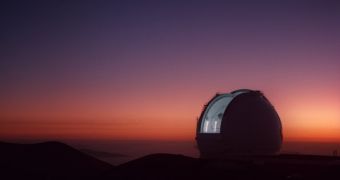A series of new studies published in space journals indicate that the extrasolar planet Gliese 581g may indeed exist around the star Gliese 581, a red dwarf located in the constellation of Libra, some 20 light-years away from Earth. Previously, other studies had shed some doubts on the planet's very existence.
The world was first discovered in 2010 by a team of astronomers spearheaded by expert Steven Vogt. The group used the UCO/Lick Observatory at the University of California to reveal the existence of this alien world, the sixth in its star system.
At that time, Vogt's team said that the world was 3 to 4 times more massive than Earth, and that it orbited its parent star in the middle of its habitable zone – an area around every star where temperature ranges are just right to support the existence of liquid water.
But experts with the Geneva Observatory in Switzerland, led by astronomer Michael Mayor, shed some doubts on the planet's existence, by publishing a study that did not identify Gliese 581g at the proposed location. Two other studies that came afterwards presented the same conclusion.
Last year, Vogt and his group published yet another paper featuring Gliese 581g, which ripped into the conclusions of the Swiss study, and provided a new batch of evidences that the planet does exist. The expert used radial velocity data from two sensitive instruments to confirm the world.
The first instrument was the High Accuracy Radial Velocity Planet Searcher (HARPS) spectrograph on the European Southern Observatory's 3.6-meter telescope, at the La Silla Observatory, in Chile. The second was the High Resolution Echelle Spectrometer (HIRES) spectrograph on the Keck Telescope, in Hawaii.
If Gliese 581g does exist, then its orbit may put it in a sweet spot as far as the presence of liquid water – and therefore its habitability potential – goes. The planet is believed to lie about 0.15 astronomical units from its parent star, or 15 percent of the distance between the Sun and the Earth.
This may seem very close by, but Gliese 581 is a red dwarf, meaning that it is smaller, lighter and less luminous than the Sun. As such, its habitable zone lies much closer to its surface than the Sun's, Space reports.
Establishing whether or not Gliese 581g exists goes beyond disputes between astronomy groups. This world is located extremely close by, and could make up a wonderful target for future long-duration human exploration or settlement missions.

 14 DAY TRIAL //
14 DAY TRIAL //